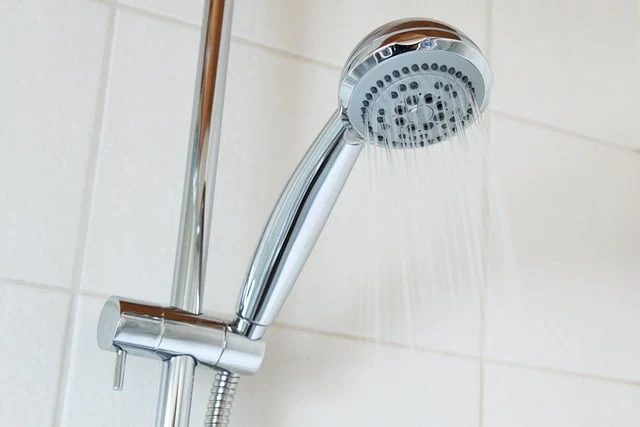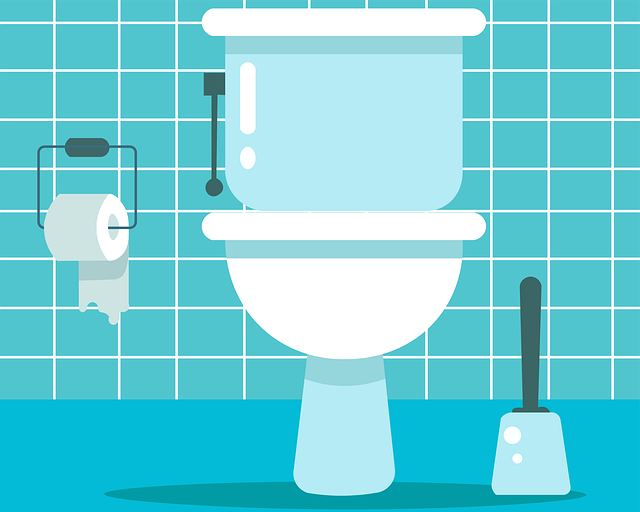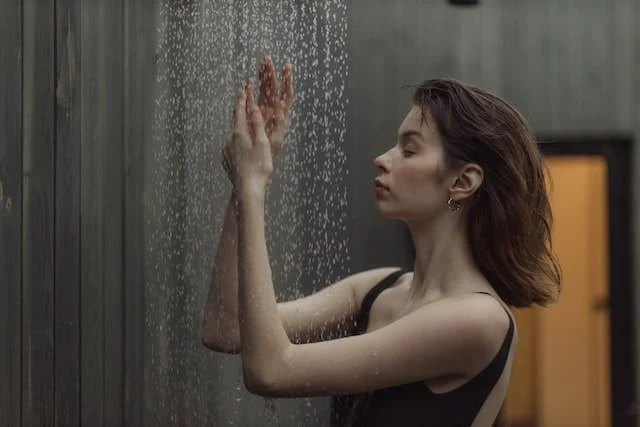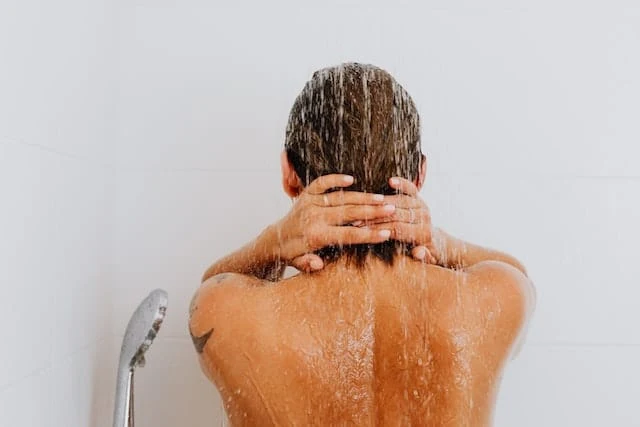The debate over peeing in the shower continues, with many advocating for the practice due to its water-saving benefits. However, Dr. Alicia Jeffrey-Thomas, a pelvic health specialist, warns that for those assigned female at birth, this habit could have unintended health consequences.
The Water Conservation Argument

One of the strongest arguments for urinating in the shower is its potential to save water. By eliminating the need for a separate toilet flush, a person could save approximately 2,190 liters (579 gallons) of water per year. If the entire U.S. population adopted this practice, it could lead to an annual water savings of 699 billion liters (185 billion gallons). This significant reduction in water consumption highlights the environmental advantages of shower urination.
Potential Health Risks: The Pelvic Floor Connection
Despite the environmental benefits, the potential health consequences of this habit must be considered. Dr. Jeffrey-Thomas explains in a TikTok video that regularly peeing in the shower may lead to pelvic floor and bladder control issues.
The Pavlovian Response
Dr. Jeffrey-Thomas likens this habit to Pavlov’s classical conditioning experiment, where dogs learned to associate the sound of a bell with food. Similarly, repeatedly urinating in the shower can train the brain to link the sound of running water with the urge to pee. This association may result in involuntary urination triggered by running water sounds, such as a faucet, toilet flush, or even rain.

Pelvic Floor Dysfunction Risks
For individuals with existing pelvic floor dysfunction, this learned association can exacerbate bladder control problems. Dr. Jeffrey-Thomas explains that urinating while standing in the shower does not allow the pelvic floor muscles to fully relax, potentially leading to incomplete bladder emptying. Over time, this can contribute to urinary retention and increase the risk of urinary tract infections (UTIs).
Some argue that squatting while urinating in the shower might alleviate pelvic floor strain. Dr. Jeffrey-Thomas acknowledges that a full squat position allows for better pelvic floor relaxation, but she still advises against making shower urination a habit. If one must urinate in the shower, a proper squatting position is preferable to standing.
Why Doesn’t Toilet Flushing Trigger the Same Response?

A common question is why flushing the toilet doesn’t condition the brain in the same way. Dr. Jeffrey-Thomas clarifies that by the time a person flushes the toilet, they have already urinated, so no association is formed. However, individuals who struggle to resist the urge to urinate when exposed to running water may already have underlying bladder control issues.
Understanding Pelvic Floor Dysfunction

Pelvic floor dysfunction is a common condition, particularly among women. The pelvic floor is a group of muscles that support the bladder, uterus, rectum, and other organs. Dysfunction occurs when these muscles become too weak or too tight, leading to symptoms such as:
- Urinary and bowel incontinence
- Lower back pain
- Pain during intercourse
- Increased urgency or frequency of urination

Factors such as childbirth, surgery, aging, obesity, and high-impact activities can contribute to pelvic floor dysfunction. Given that urinating in the shower might worsen symptoms, individuals should be aware of these risks before adopting the habit.
The Biological Factor: Why Female Anatomy Matters
Dr. Jeffrey-Thomas emphasizes that those with female anatomy are not designed to urinate while standing. Unlike male anatomy, where the positioning allows for better bladder emptying while standing, females may struggle to fully relax the pelvic floor in this position. This can lead to incomplete bladder emptying, increasing the risk of UTIs and other urinary complications.
Pros and Cons of Peeing in the Shower

Pros:
- Water conservation: Reduces toilet water usage significantly.
- Convenience: Saves time, particularly during a rushed morning routine.

Cons:
- Pelvic floor health risks: May contribute to bladder control issues and pelvic dysfunction.
- Conditioned response: Can create an involuntary urge to urinate when exposed to running water.
- Sanitation concerns: While urine is mostly sterile, it can still contain bacteria that may pose hygiene risks.

The Bottom Line
While peeing in the shower may seem like an eco-friendly and convenient habit, it is important to weigh the potential health risks. Dr. Alicia Jeffrey-Thomas’s insights serve as a reminder to consider the long-term effects of our daily routines. Striving for sustainability should not come at the cost of personal health. Ultimately, making an informed decision based on both environmental and health factors is key to maintaining overall well-being.
Foo Fighters’ Frontman Welcomes Baby Outside Marriage—See His Daughters’ Surprising Response
Dave Grohl, the lead singer of Foo Fighters, has been in the news recently for a big scandal involving his personal life. This news has not only shocked his fans but also affected his family. To escape the intense attention from the media, Grohl’s daughters have chosen to stay away from social media.
Dave Grohl is famous for his energetic performances and big personality. But this recent news about his personal life has caught everyone off guard.

On September 10, Dave Grohl shared on Instagram that he had recently become the father of a new baby girl. However, this baby was not with his wife, Jordyn Blum.
Grohl admitted that he is facing a tough situation and is working hard to rebuild trust with his family. He expressed his love for his wife and children and said he is doing everything he can to earn their forgiveness.

The news about Dave Grohl’s new baby has had a big impact on his family. His two daughters, Violet, 18, and Harper, 15, have chosen to deactivate their Instagram accounts. They may be stepping back from social media to avoid the intense attention and scrutiny.
Violet had a large following with 225,000 fans under the username “viioletgrohl,” while Harper had over 40,000 followers as “harpergrohll.” As of now, both of their accounts are no longer active.

After Dave Grohl’s announcement about his new baby, fans trying to visit Violet and Harper’s Instagram profiles now see a message saying “page not found.” Violet’s account reportedly went blank just an hour after the announcement, but it’s not clear when Harper’s account was deactivated.
Many fans have taken to social media to voice their disappointment. One user expressed their feelings, saying, “This is really disappointing. I know people aren’t perfect and make mistakes, but it’s just another example of how few people take marriage vows seriously.”

Another commenter criticized the impact of Grohl’s actions on his family, saying, “Now a family is torn apart because of it. No matter what you say, kids are never the same after this.”
Other people were shocked by Grohl’s decision. One user asked, “Imagine a man who has it all – money, fame, a house, a family, and a beautiful wife – and he still betrays her in the worst way.”

Users continued to express their frustration, arguing that Grohl’s claim of love for his wife didn’t match his actions. They pointed out that Grohl’s statement about loving his wife while cheating on her seemed contradictory and insincere.
One user suggested that cheating and having a child outside of his marriage was a deep betrayal. They felt it showed a complete lack of understanding of love and respect for his family.

While many expressed their disappointment, others sympathized with Grohl’s family. One fan shared, “Look at how beautiful his family is. It’s heartbreaking to think he would risk it all for something like this. I hope his wife and daughters can find healing and move forward.”

Grohl and Jordyn Blum have been married for over 20 years. They first met in 2001 at the Sunset Marquis Whiskey Bar in Los Angeles. Just two years later, on August 2, 2003, they got married. Together, they have three daughters.

Their eldest daughter, Violet, born in 2006, has shown a strong interest in music, much like her father. During the 2023 Glastonbury Festival, Grohl proudly introduced Violet on stage, calling her his “favorite singer in the world.” He shared that they would perform “Show Me How,” a song he wrote for his mother (Violet’s grandmother), which is featured on their latest album, “But Here We Are.”

As the performance wrapped up, Grohl proudly shouted that Violet was “his girl” and joked about how much he enjoyed being on stage with her, even if he hit a wrong note.
The couple’s family also includes Harper, born in 2009, and 10-year-old Ophelia, born in 2014. Despite recent difficulties, Grohl and Blum had continued to be a visible couple. In July 2024, they were spotted together at the Wimbledon tennis tournament in London, enjoying the event.

Interestingly, this isn’t Dave Grohl’s first marriage. He was previously married to photographer Jennifer Leigh Youngblood in the ’90s, but they divorced in 1997.
In a 2007 interview with *The Guardian*, Grohl admitted that infidelity was a factor in their breakup. This issue appears to have resurfaced in his current relationship, as highlighted by his recent announcement.

As Dave Grohl and Jordyn Blum navigate this new chapter, their two decades of shared history remind us that even rock legends face the complexities of family and relationships.



Leave a Reply